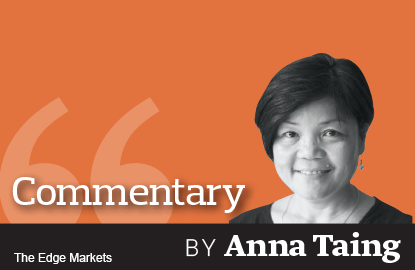
THERE were no great expectations and no big surprises. As Malaysian budgets go, the proposed Budget 2017 unveiled on Friday was not a big departure from previous ones. For some years now, fiscal prudence, seeing to the welfare of the rakyat and ensuring sustainable growth have been the common underlying themes and rhetoric.
Like in previous budgets, some goodies were announced to help the lower income group ride out the current economic downturn and to cope with the higher cost of living.
Cash handouts, it would appear, have become a permanent feature of the Malaysian budget. For 2017, the government has increased the allocation for 1Malaysia People’s Aid (BR1M). For households with a monthly income of below RM3,000, BR1M will be increased to RM1,200 from RM1,050 and RM1,000. For those with household earnings between RM3,000 and RM4,000, the allocation will go up to RM900 from RM800.
Direct income transfers or cash aid are never good for the economy in the long term. These at best are quick fixes that must be accompanied by bold measures to address the weaknesses in the economy to bring about sustainable growth in the long term.
Yet, it is pertinent to note that in his budget address, Prime Minister Datuk Seri Najib Razak points out that: “It is evident, through measures and initiatives implemented by the government, our economy records sustainable growth. According to Purchasing Power Parity (PPP), Malaysia is now an upper-middle income country, surpassing many countries not only in Asia but also throughout the world.
“Malaysia’s PPP per capita has increased from US$23,100 in 2012 to US$26,891 in 2015.”
It is perplexing why an upper-middle income country with an improving Gini coefficient (reduction in the rich-poor gap) still needs to give cash handouts to the people to increase their disposable income, as has been the case for the last few years.
Going forward, the reality is that the Malaysian economy remains vulnerable to external headwinds and growth is unlikely to show an uptrend any time soon. Malaysia’s gross domestic product is projected to grow around 4.2% to 4.5% this year and between 4% and 5% in 2017. The underlying trend remains downwards. A widespread view is the man in the street is feeling the pinch as income growth is not outpacing the rise in the cost of living.
Indeed, a view is that the government’s growth forecasts for 2017 are a tad on the optimistic side, especially when economic growth in major economies like the US, Japan, Europe and China does not look very good from here.
Given the poor global outlook, domestic demand is once again relied on to be the main growth driver for the Malaysian economy. However, if the tough economic environment continues, private investments and consumer spending will be hurt, thus hurting growth. Already, the labour market has begun to show signs of softening as some companies have started downsizing their workforce to cut costs.
Where are the bold decisions to tackle the structural issues that can undermine the longer-term health of the economy? More so at a time when we are facing strong headwinds from a faltering global economy and increasing competition in trade and for foreign direct investments.
The concerns include the persistent fiscal deficit, the lack of strong productivity growth, growing inefficiencies in the economy, a deterioration in the quality of education and a shortage of skilled labour to take the economy to its next level of growth.
For some years now, a key focus of the budget has been to trim the fiscal deficit (the 2017 target is 3% of GDP, from 3.1% in 2016) to improve the government’s financial position. Not surprisingly, given the recent fall in oil and commodity prices and global headwinds, there has been no significant progress.
It is interesting that the allocation to operating expenditure as a percentage of the total budget has been rising. Out of the RM260.8 billion budget allocation in 2017, RM214.8 billion, or 82.4%, is for operating expenditure and RM46 billion, or 17.6%, for development expenditure.
If we look at the trend since 2010, the allocation to operating expenditure has increased from 72.2% of the total budget to 82.4% in 2017. On the other hand, allocation to development expenditure has shrunk from 27.7% of the budget to 17.6% in 2017.
A research house notes that expenditure on emoluments, pensions and gratituities has increased to 46.1% of total operating expenditure, which it opines is a tad too high for comfort.
Trimming the deficit and addressing the structual weakness in the economy will remain a big challenge. While Budget 2017 lays out the revenue and spending strategies for the coming year, it must also lay the foundations for sustainable growth in the long term. It is late, but still not too late, to bite the bullet.
Anna Taing is managing editor at The Edge Malaysia
Save by subscribing to us for your print and/or digital copy.
P/S: The Edge is also available on Apple's AppStore and Androids' Google Play.